The Ultimate Guide to Planting Impatiens
Planting Impatiens is a great choice to add bright and cheerful annuals to a shady part of your yard. Growing them is easy, but there are a few tips and techniques to remember for growing these lovely annuals.

Impatiens are one of the most popular bedding plants for adding a pop of color to garden beds, borders, and containers. They thrive in well-drained soil and a shady spot and can be propagated easily from stem cuttings.
With regular watering, fertilizing, and pruning, Impatiens can bloom beautifully throughout the entire growing season.
However, it is important to be mindful of the danger of frost and to take precautions to protect the plants. Planting impatiens is a great way to bring color to any shady garden space.

Planting Impatiens
Old-fashioned Impatiens have been a popular choice for home gardeners as bedding plants for many years. They make an excellent addition to any shady area, whether planted en masse or mixed with other shade-loving plants.
In my rustic flower garden designs, I often use old buckets, wooden barrels, window boxes, and galvanized containers to grow Impatiens. Their quick growth habit and a profusion of flowers enhance the shaded perennial plants in my garden beds.
While Impatiens are available in many beautiful colors, I prefer the showy white flowers that perfectly contrast my dark gray potting shed and various container planters.

Reasons for Planting Impatiens
No Deadheading Necessary: Unlike some annuals such as zinnias, Impatiens are self-cleaning and don’t require deadheading to continue blooming. This makes them low maintenance and easy to care for.
Ideal for Shady Areas: Impatiens are a perfect choice for growing in shady conditions, as they are easy to grow and offer non-stop flowering.
Few other flowers can compare to them as an ideal shade annual. They can be planted in shady borders, along walkways, in woodland gardens, or as ground cover.
Additionally, they are a great option for DIY window boxes and pots in shady areas.
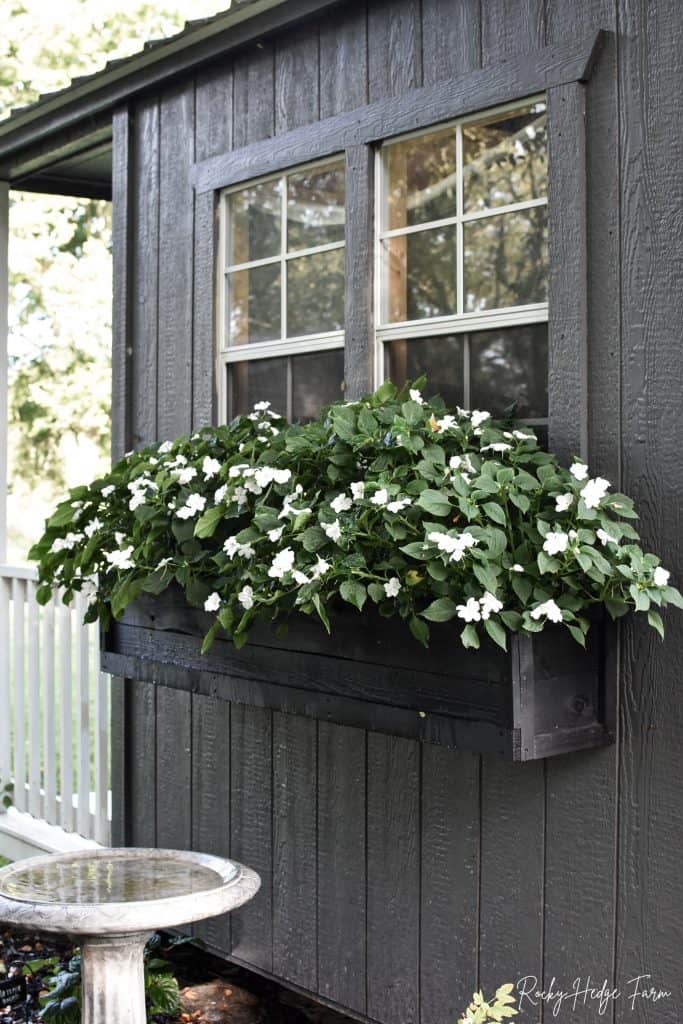
when to Plant Impatiens
The best time to plant impatiens is in the spring after the threat of frost has passed and the soil has warmed to at least 65°F (18°C). Impatiens are sensitive to frost and cold temperatures, so planting them too early can result in stunted growth or even plant death.
Are Impatiens Perennials?
Impatiens are typically grown as annuals, meaning that they complete their life cycle in one growing season and do not survive harsh winters.
Do Impatiens Prefer Sun or Shade?
Impatiens generally prefer growing in shade or partial shade, making them an ideal choice for gardens or areas with low levels of sunlight. While they can tolerate some sun exposure, too much direct sunlight can lead to leaf burn or wilting.
Where do Impatiens Grow Best?
The best growing conditions for impatiens include moist and well-draining soil with a slightly acidic pH of 6-6.5. When planting impatiens, it’s best to choose shaded or semi-shaded locations and space them about 8-10 inches apart.
How Far Apart Are You Supposed to Plant Impatiens?
When planting impatiens, it’s recommended to space them about 8-10 inches apart. This spacing allows the plants to grow and spread out while ensuring adequate airflow and light penetration for healthy growth and blooming.
If planted too closely, impatiens may become overcrowded and develop issues such as powdery mildew or other fungal diseases.


How to Plant Impatiens
Impatiens are beautiful and colorful flowering plants that are relatively easy to grow. They are popular among gardeners due to their vibrant hues and ability to bloom throughout summer. Here are some tips on growing impatiens:
Planting
To plant impatiens, gently squeeze the sides of the container to loosen the soil and tip the container on its side to slide out the plant.
Plant the impatiens in a hole that matches the depth and width of the rootball at the same level it was in the pot.
Plant them 6 inches apart to encourage upright growth or 8-10 inches apart to promote spreading and filling gaps.
Light
Impatiens require bright, indirect light to thrive. It’s best to plant them in a location that receives partial morning sun and afternoon shade for about 2-4 hours.
They can also grow in full shade, but some exposure to sunlight can help the plants to bloom more abundantly.
Watering
It is best to water impatiens at the base to avoid getting the leaves wet. This helps prevent disease. Impatiens should be watered regularly and kept moist but not very wet.
During hot, dry weather, plants may need to be watered daily. If impatiens are planted in window boxes, containers, or hanging baskets, they need daily watering, and the containers should have good drainage.
Pruning
Impatiens should be pruned when they grow to about 3 inches high to help avoid the plants becoming leggy. To prune impatiens, you can use garden scissors to trim back the plants to 1/2 or 1/3 of their size.
Pinching back the plant will encourage bushier growth with new blooms. This usually happens around midsummer, but they can be pruned anytime their colors fade and begin to look spindly.
Fertilizer
One way to fertilize impatiens is by applying a slow-release granular fertilizer before planting to provide adequate nutrients for the growing season.
Additionally, you may choose to use specific liquid fertilizers, such as FoxFarm Big Bloom, which can provide extra nourishment to your plants and help them flourish.

Varieties of Impatiens Flowers
Impatiens Walleriana: Also known as Busy Lizzie, this traditional impatiens species is one of the most popular annual bedding plants. They bloom in a variety of colors, including white, pink, purple, and red, and can be easily found in garden centers.
Impatiens Walleriana usually grows 1-2 feet and produces five-petaled flowers that cover the plant with beautiful blooms from early spring to first frost in the fall.
New Guinea Impatiens: New Guinea Impatiens is another common Impatiens that differs slightly from the traditional variety.
These flowers can tolerate up to half a day of sun in most parts of North America. However, their drought tolerance is low, and they need to be watered daily, especially if planted in containers.
Sunpatiens: Sunpatiens are resistant to downy mildew and thrive in full sun. They are vigorous growers and require no extra care, making them an excellent choice for sunny areas.
Super Elfin White Impatiens
These white impatiens have large flowers and small pointy green leaves. From early spring to the first fall frost, I can count on these healthy plants to produce high-quality blooms and add charm to all the shaded areas of my flower garden bed.

Impatiens Diseases
Impatiens can be susceptible to several diseases that can harm the plants
Downy Mildew: One of the most devastating diseases is downy mildew, which can cause yellowing and dropping of leaves, followed by brown, dead portions of leaves with white, downy spores on the undersides of the leaves.
This disease is difficult to control, so it’s best to choose resistant varieties when planting and to destroy infected plants and debris to prevent further spread.
Powdery Mildew: Another fungal disease that can affect impatiens is powdery mildew. It causes white powdery spots on the leaves and stems. To prevent powdery mildew, keep the leaves dry when watering and ensure the plants have sufficient air circulation.

How to Propagate Impatiens
Propagating impatiens through cuttings is a simple process that involves rooting the cuttings in water. First, cut 6-inch long stems and remove any lower leaves.
Then, place the cutting in water and put it in a bright location on a windowsill, away from direct sunlight. Change the water when it becomes cloudy and wait for the roots to develop.
Once the roots have grown, plant the cutting in potting soil and keep the soil moist. Continue to grow the plant in a bright area without direct sunlight.

My Favorite Gardening Essentials
- Garden Tool | Scissors: perfect size garden scissors for trimming small stems or deadheading flowers.
- Hanging Solar Light Lantern: solar powered and weather resistant, I use these to add charm and character to the borders of my flower beds.
- Slate Plant Labels: weatherproof hanging labels to mark what has been planted.
- Gardening Gloves: lightweight, protects hands from skin wounds, cuts, and dirt.
- Plant Food: a great slow-release plant food to feed flowers throughout the season. Another excellent liquid fertilizer to use is FoxFarms Big Bloom.

Frequently Asked Questions
Where to Plant Impatiens
Impatiens should be planted in a shady location protected from the wind. They require protection from the hot afternoon direct sun to maintain their beautiful green leaves and color.
Do Impatiens Need Full Sun or Shade?
Most traditional Impatiens thrive in medium shade. However, New Guinea and SunPatiens will endure more sun than Impatiens walleriana.
Are Impatiens Annuals or Perennials?
Impatiens are tender perennials in Zones 10-11 but otherwise are grown as annuals.
How Often to Water Impatiens?
Impatiens should be watered consistently to keep the soil moist but not waterlogged. This usually means watering once or twice a week, depending on the weather conditions.
It’s important to avoid letting the soil dry out completely, as this can cause the plants to wilt and potentially die. Additionally, impatiens grown in containers may require more frequent watering.
What Happens if Impatiens Get Too Much Sun?
Most impatiens can also tolerate early morning sunlight if they are well-shaded from the hot afternoon sun. The plants will wither, wilt and die if they are exposed to too much heat and sunlight.

More Flower Gardening Posts You May Enjoy
Here are a few more of my favorite flower gardening posts to enjoy!
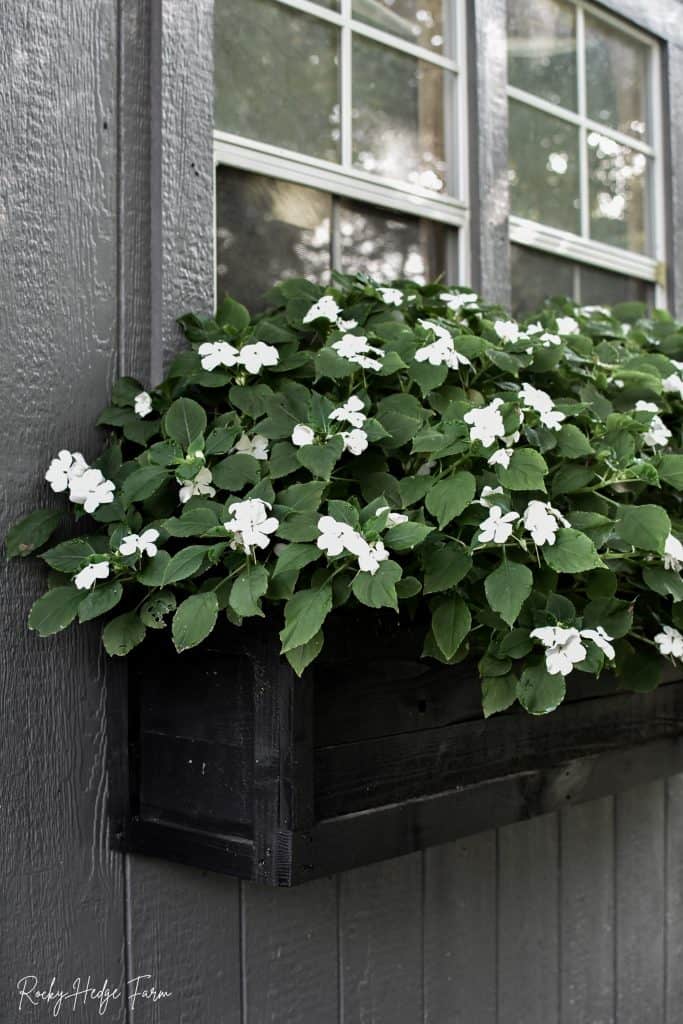
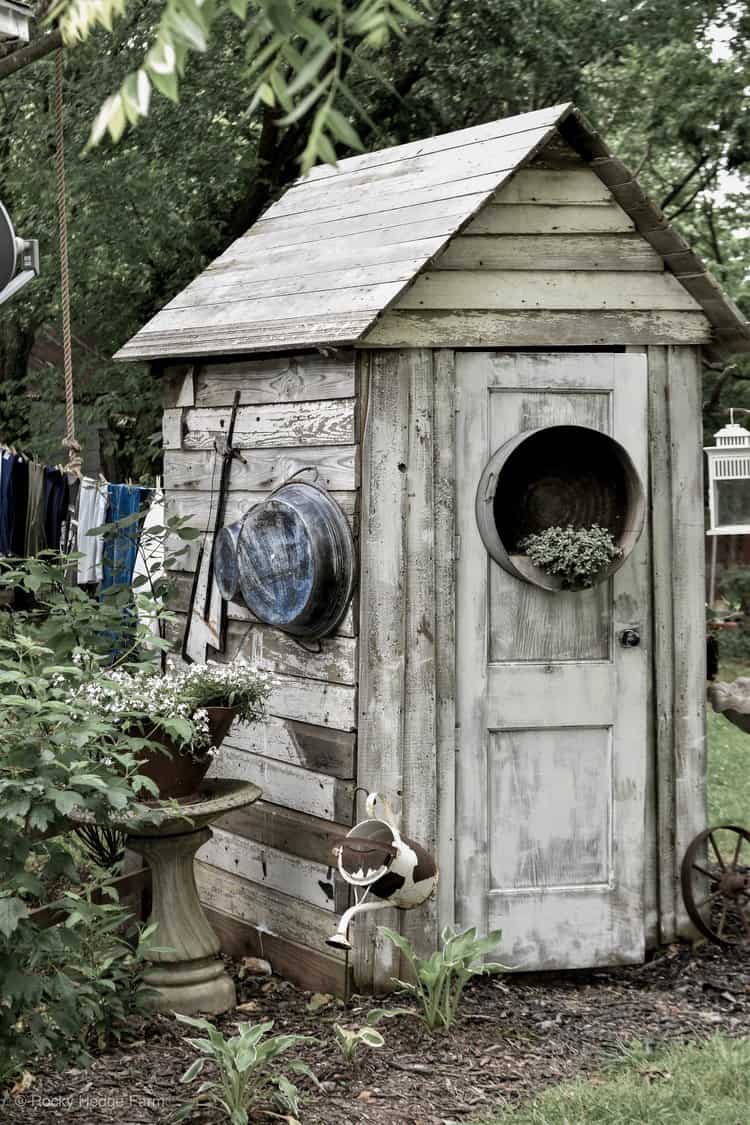
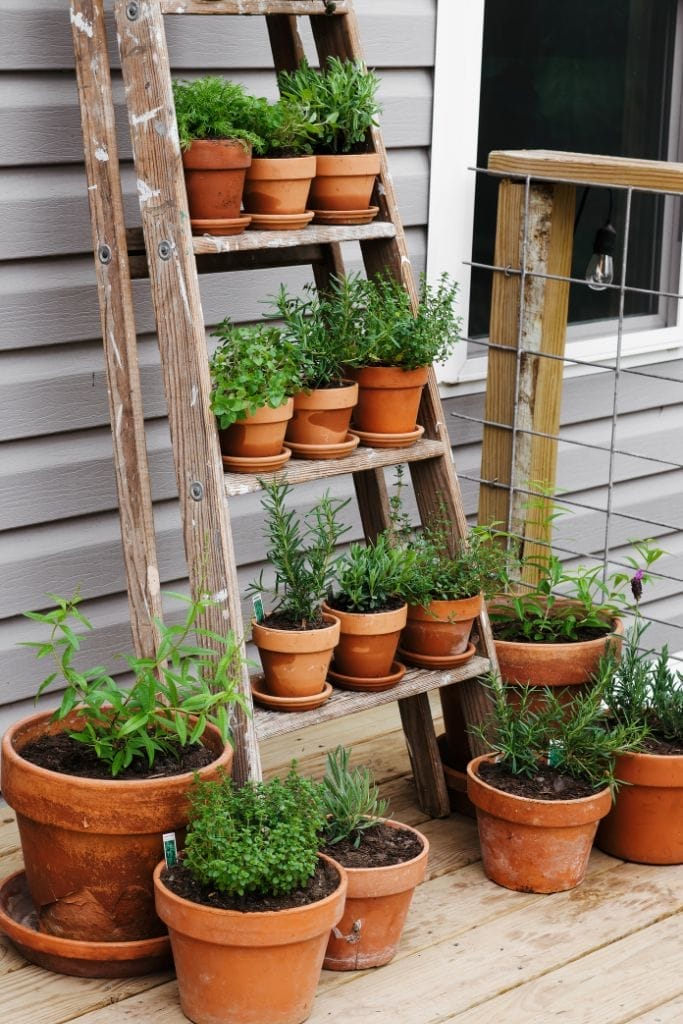

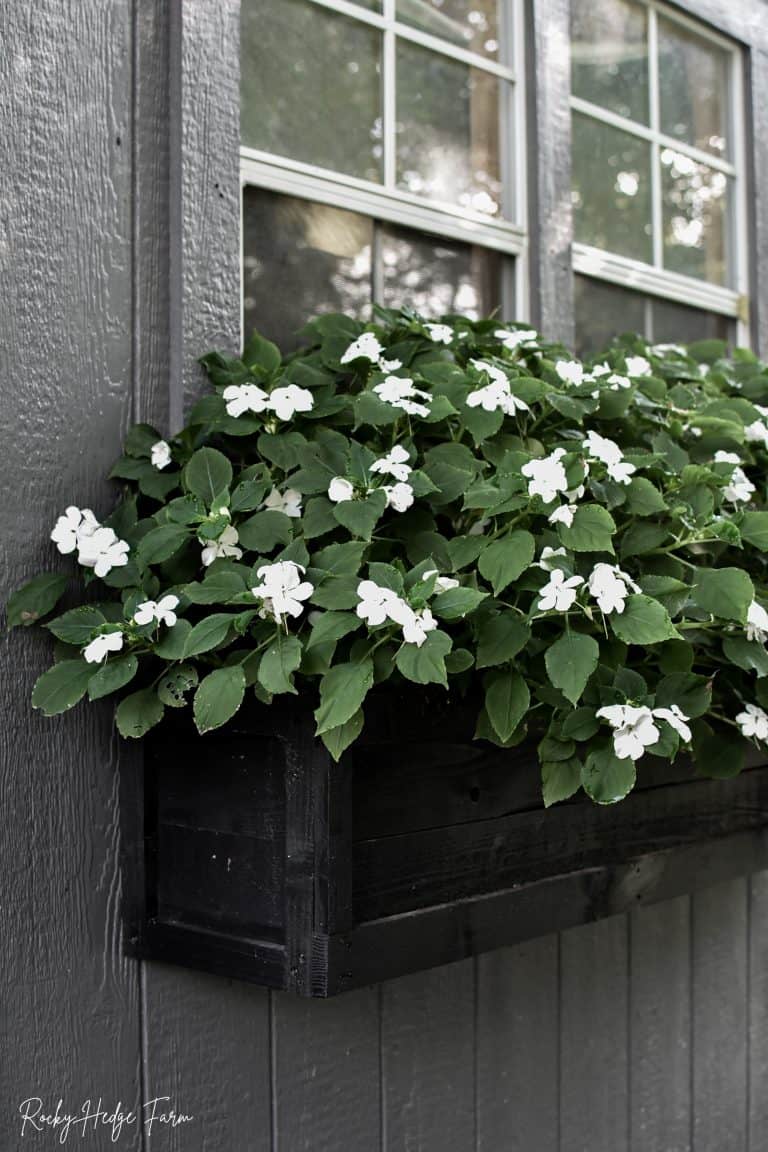

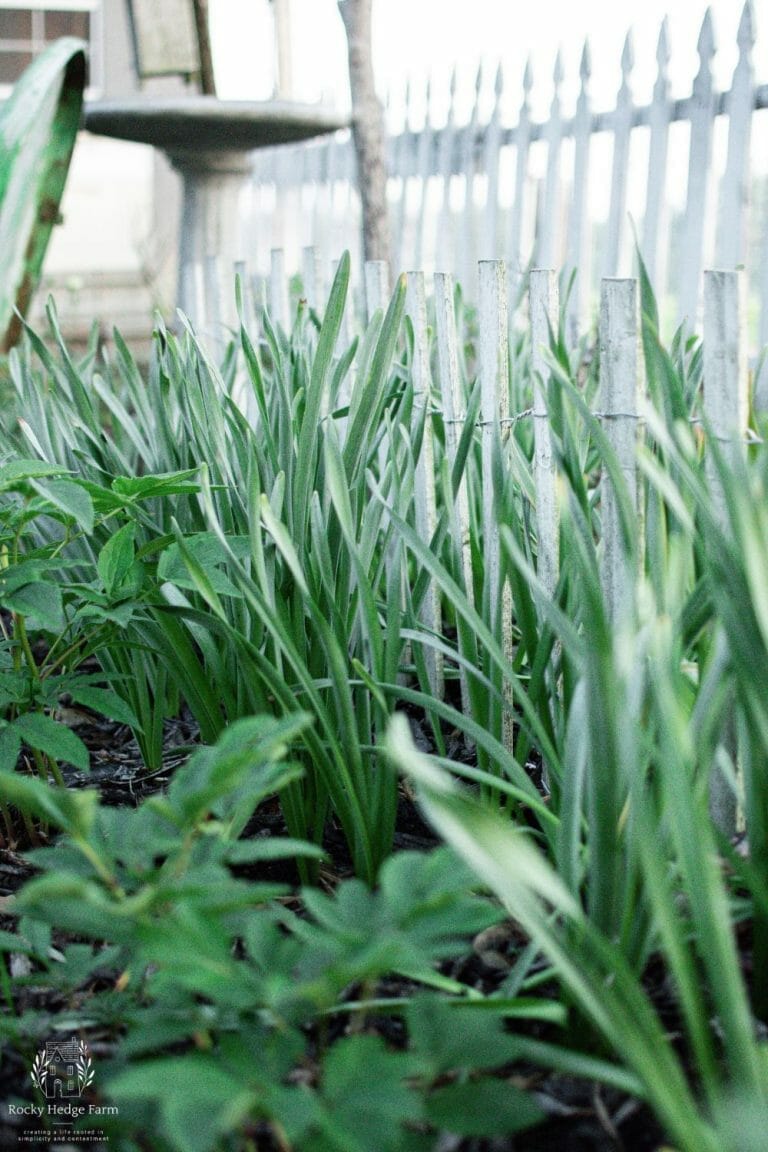
Thank you so much for all the information. I have planted Impatiens. One time I had good luck with then till fall. Then the deer decided they couldn’t resist then any more. Your guide has encouraged me to try again. Thank you. Your Impatiens and Zinnias are beautiful.
Thank you so much!